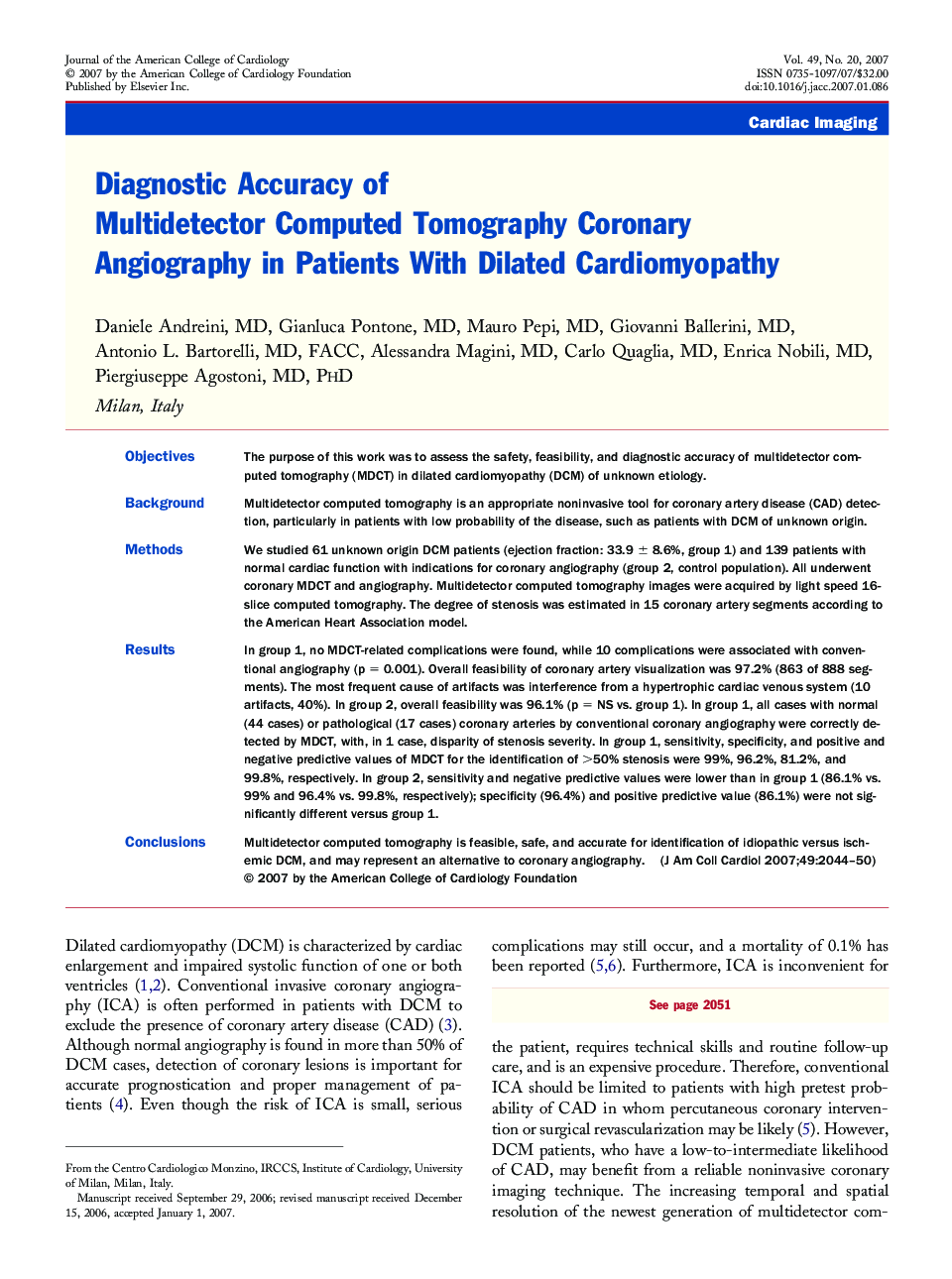| Article ID | Journal | Published Year | Pages | File Type |
|---|---|---|---|---|
| 2954457 | Journal of the American College of Cardiology | 2007 | 7 Pages |
ObjectivesThe purpose of this work was to assess the safety, feasibility, and diagnostic accuracy of multidetector computed tomography (MDCT) in dilated cardiomyopathy (DCM) of unknown etiology.BackgroundMultidetector computed tomography is an appropriate noninvasive tool for coronary artery disease (CAD) detection, particularly in patients with low probability of the disease, such as patients with DCM of unknown origin.MethodsWe studied 61 unknown origin DCM patients (ejection fraction: 33.9 ± 8.6%, group 1) and 139 patients with normal cardiac function with indications for coronary angiography (group 2, control population). All underwent coronary MDCT and angiography. Multidetector computed tomography images were acquired by light speed 16-slice computed tomography. The degree of stenosis was estimated in 15 coronary artery segments according to the American Heart Association model.ResultsIn group 1, no MDCT-related complications were found, while 10 complications were associated with conventional angiography (p = 0.001). Overall feasibility of coronary artery visualization was 97.2% (863 of 888 segments). The most frequent cause of artifacts was interference from a hypertrophic cardiac venous system (10 artifacts, 40%). In group 2, overall feasibility was 96.1% (p = NS vs. group 1). In group 1, all cases with normal (44 cases) or pathological (17 cases) coronary arteries by conventional coronary angiography were correctly detected by MDCT, with, in 1 case, disparity of stenosis severity. In group 1, sensitivity, specificity, and positive and negative predictive values of MDCT for the identification of >50% stenosis were 99%, 96.2%, 81.2%, and 99.8%, respectively. In group 2, sensitivity and negative predictive values were lower than in group 1 (86.1% vs. 99% and 96.4% vs. 99.8%, respectively); specificity (96.4%) and positive predictive value (86.1%) were not significantly different versus group 1.ConclusionsMultidetector computed tomography is feasible, safe, and accurate for identification of idiopathic versus ischemic DCM, and may represent an alternative to coronary angiography.
